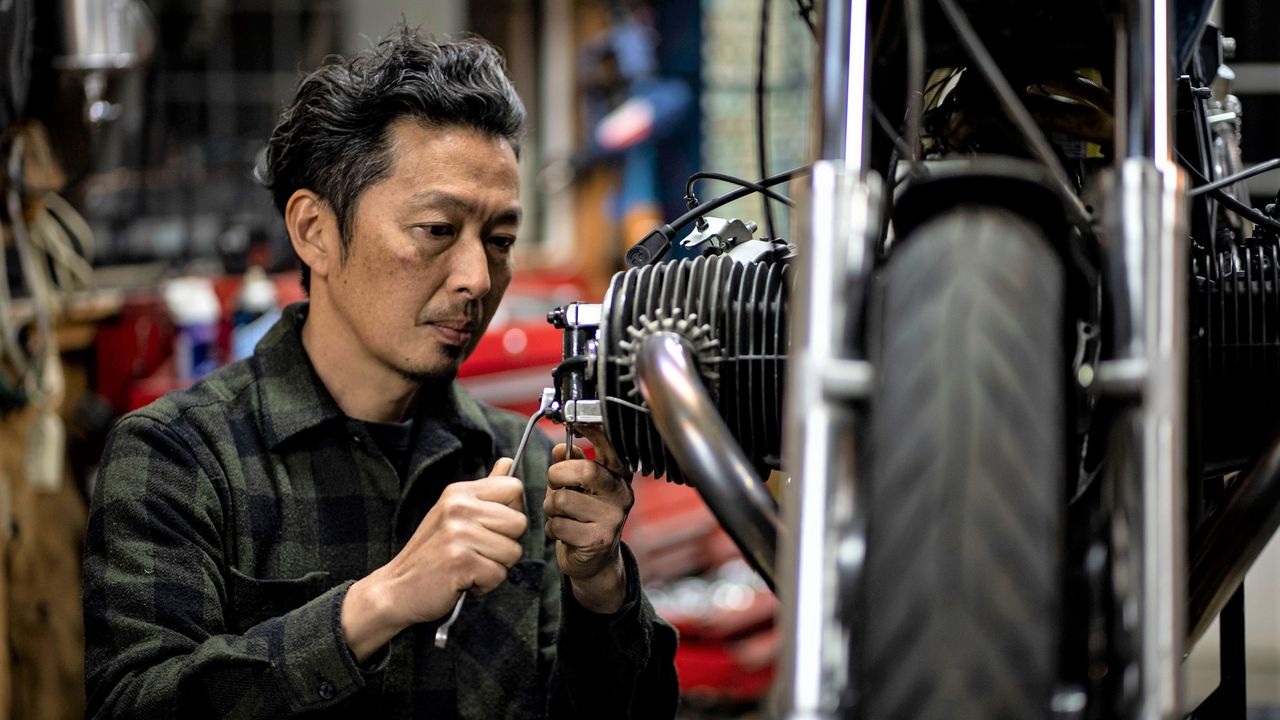
Art and Engineering: The World of Custom Motorcycle Builder Nakajima Shirō
Art Work Design- English
- 日本語
- 简体字
- 繁體字
- Français
- Español
- العربية
- Русский
One of a Kind
In customized motorcycle circles, Nakajima Shirō needs no introduction. Since joining the niche world, his reputation for craftsmanship in converting retro European machines has made him a leader in his field. Based at his workshop 46works in the foothills of the Yatsugatake Mountains in Yamanashi Prefecture, he labors in isolation, spending months at a time focused solely on building and maintaining his creations.
People are free to email him with inquiries—he keeps the telephone number and address of the shop secret to minimize distractions—but should keep in mind that Nakajima does not do general repairs, reserving his skills and creativity for grander projects. Although not the easiest person to reach, in February of this year Nakajima gave customized motorcycle aficionados a rare, first-hand glimpse at his craftsmanship with the solo exhibit Zenkai ka ina ka (Full Throttle or Nothing). Held at a gallery in Tokyo and featuring five of his creations, the event drew over 2,000 visitors from around Japan during its 10-day run.
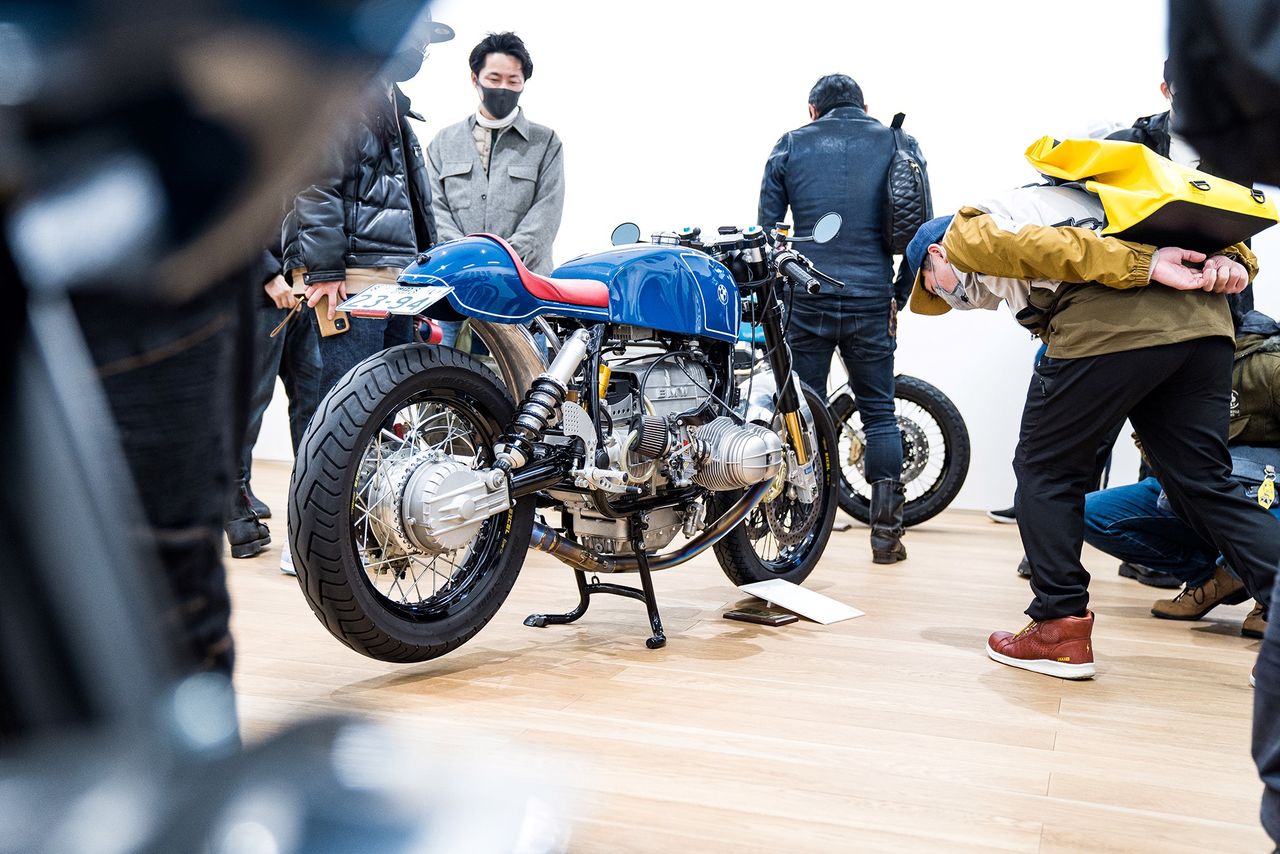
The exhibition featured privately owned motorcycles that Nakajima built.
Nakajima first rose to prominence on the customizing scene with Ritmo-Sereno, a custom shop he established in Tokyo in 2001. There he and his small crew of employees made and sold original parts and worked on semi-custom orders along with providing general mechanical services. As the shop grew, though, Nakajima noticed that business matters demanded a greater share of his attention, leaving diminishing time for building bikes. “I had to stop and ask myself what I really wanted to do,” recounts Nakajima. “That’s when I decided to focus my energy on customizing.” Leaving the shop in the capable hands of his staff, Nakajima in 2014 packed up and relocated to the countryside of Yamanashi, far from the bustle of city life.
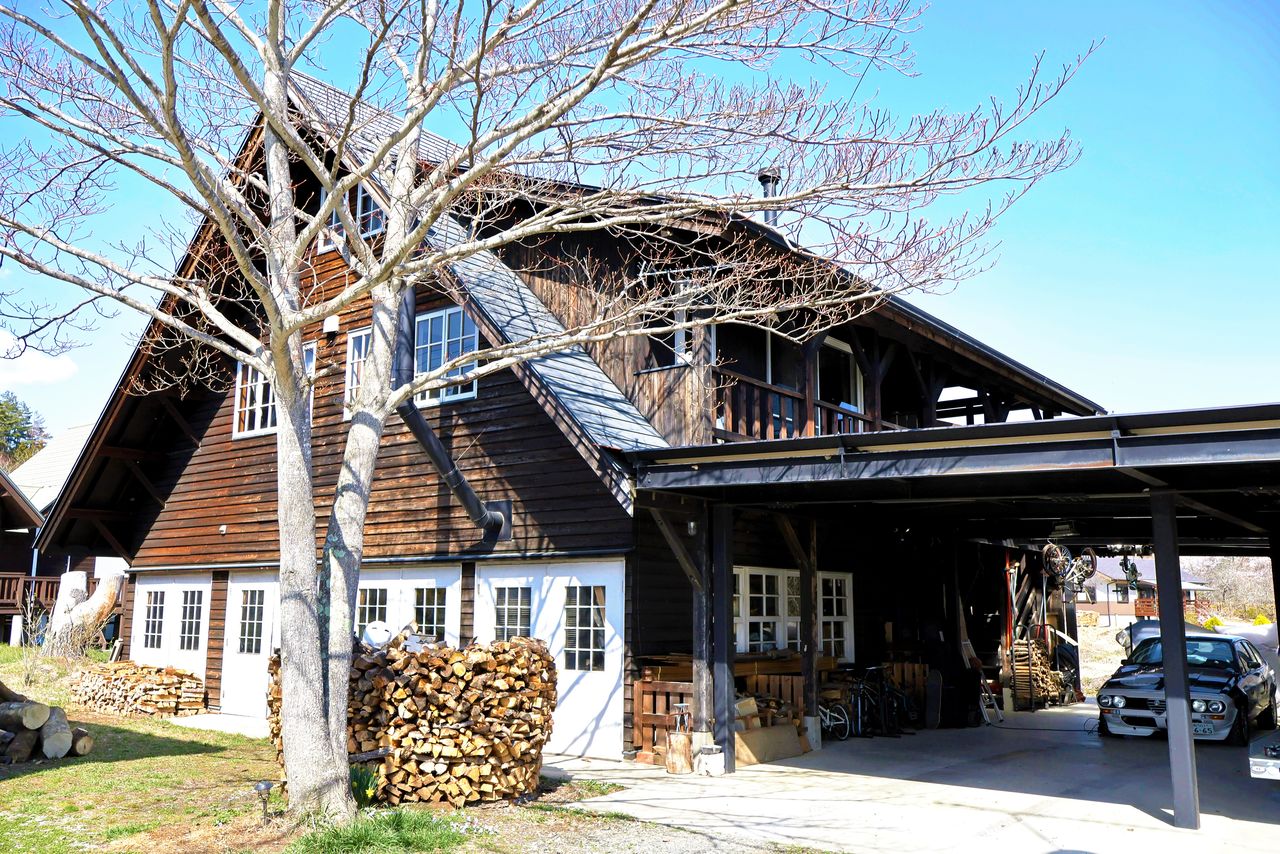
Nakajima’s workshop 46works sets in the shadows of the Yatsugatake range. A 1970 Alpha Romeo, one of Nakajima’s many other customizing projects, sets in the shop’s carport. (© Fuchi Takayuki)
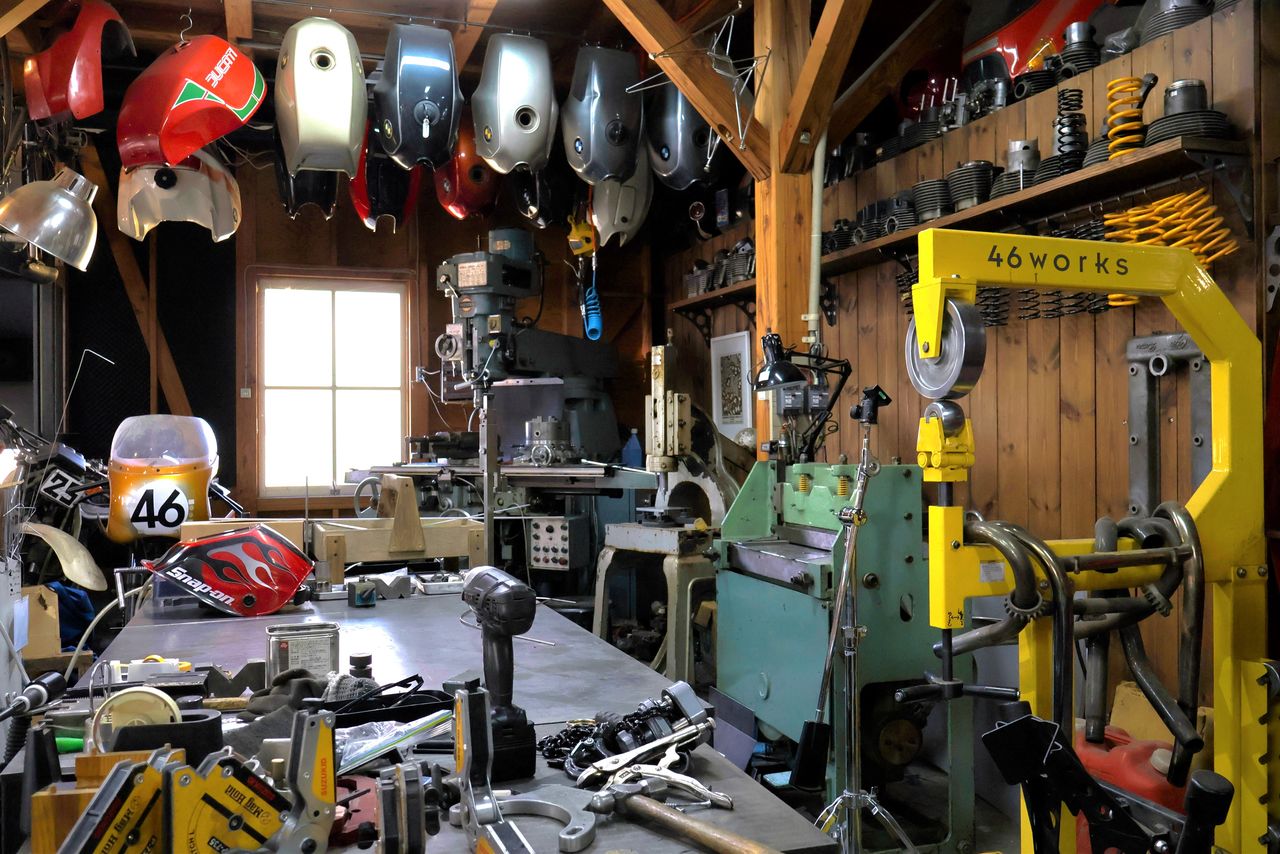
Parts and tools carefully collected by Nakajima over years line the walls and other spaces of the workshop. (© Fuchi Takayuki)
Game Changer
When Nakajima set out building bikes, customized motorcycles were synonymous with youth counterculture. Harley-Davidson “choppers” of Easy Rider fame and the British-made bikes and vintage Italian scooters favored by the Mods and Rockers of Quadrophenia dominated the scene.
Nakajima’s creative muse, however, led him toward European makers, in particular classic BMW and Moto Guzzi models from the 1970s and 80s. Using contemporary techniques and materials, he built machines that boasted the speed, comfort, and performance of modern bikes while preserving their classic look and feel. This novel combination of retro and new firmly established Nakajima as a customizer par excellence.
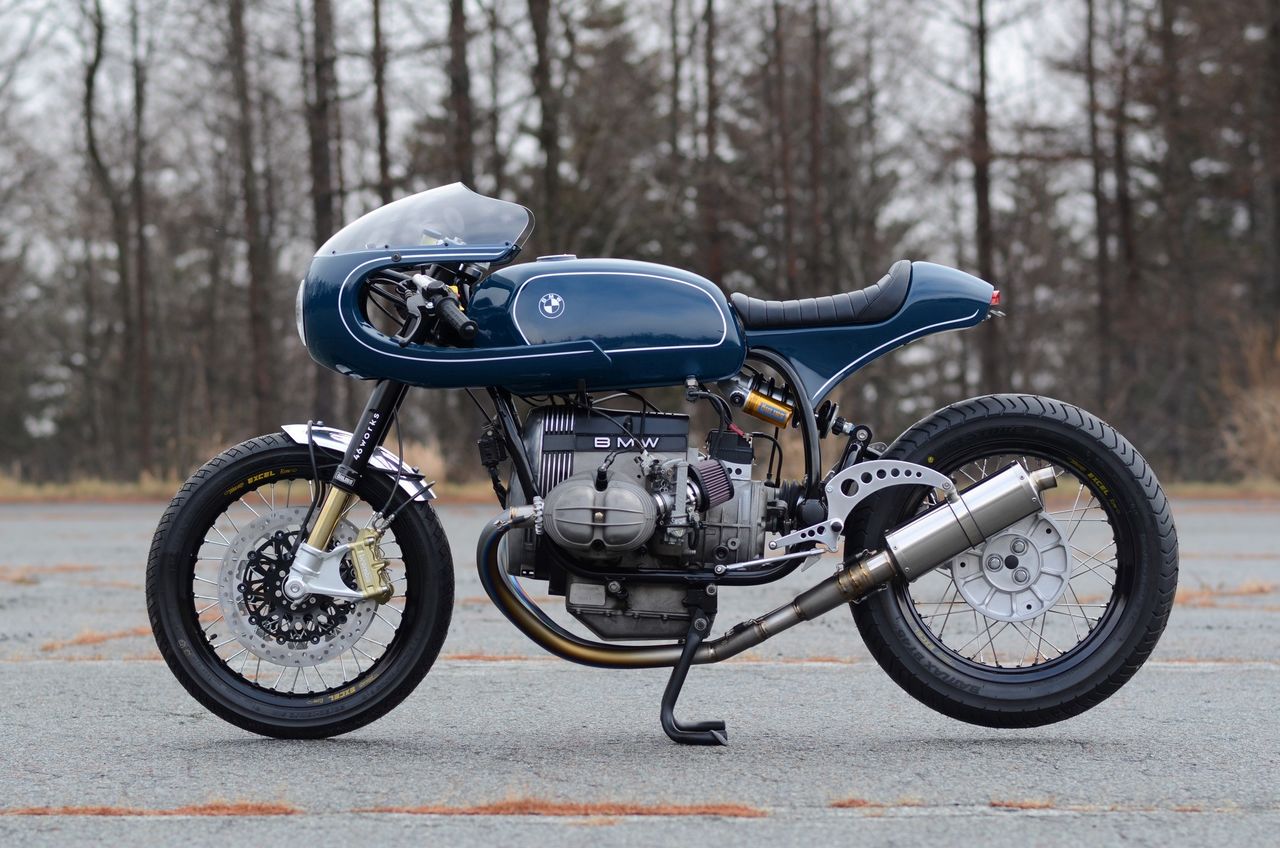
Nakajima’s 1991 BMW R100RS Café Racer. (© Nakajima Shirō)
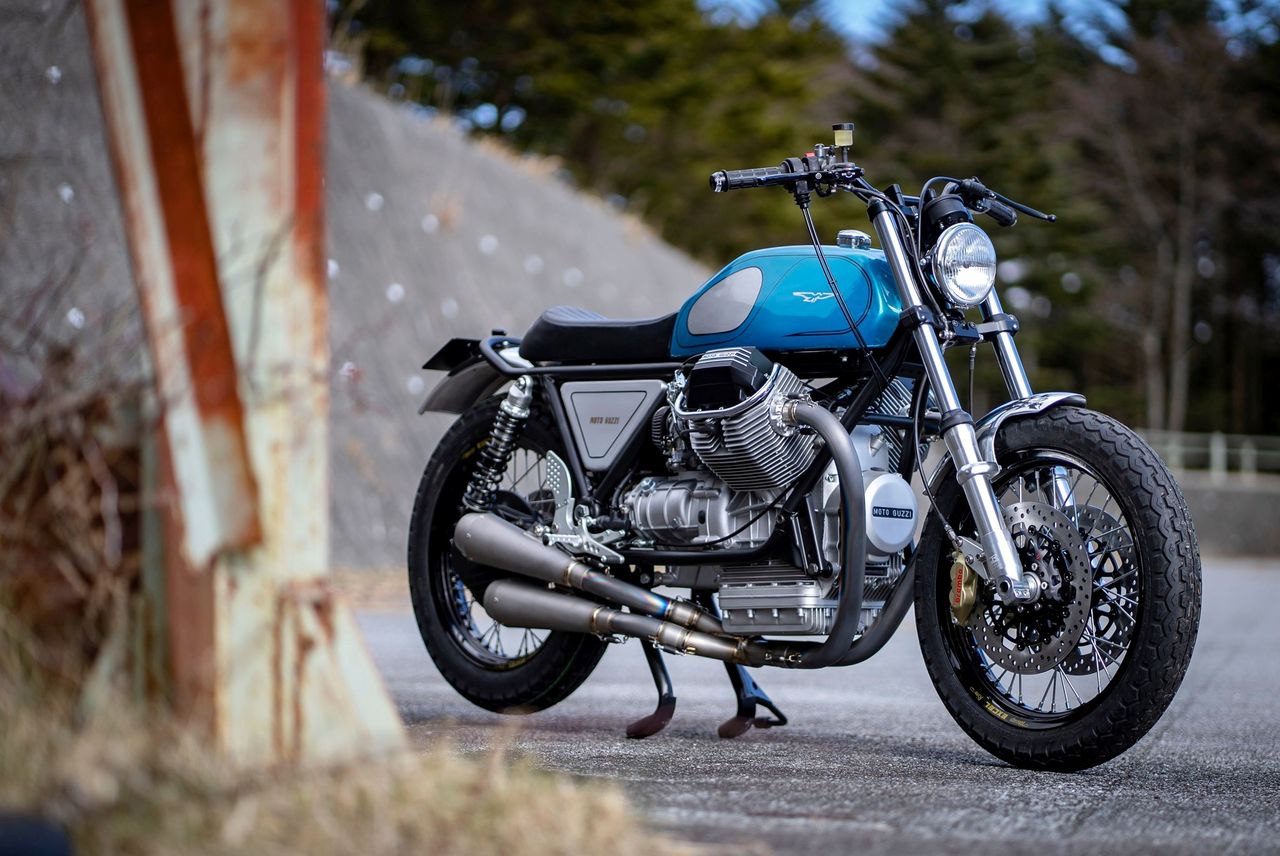
A custom based on the 1987 Moto Guzzi Le Mans 1000. (© Nakajima Shirō)
Today, Nakajima enjoys acclaim among motorcycle fans of all stripes, with his works regularly setting the internet and social media abuzz. He has also drawn the attention of manufacturers like BMW, who teamed up with him on a special project to mark the ninetieth anniversary of the German maker’s motorcycle division, Motorrad.
The undertaking brought together Nakajima and other Japanese customizers to reinterpret BMW’s classic R nineT roadster. The project had a huge impact on the custom bike scene. True to form, Nakajima impressed with his contribution, the lightweight and functional “Club Racer.”
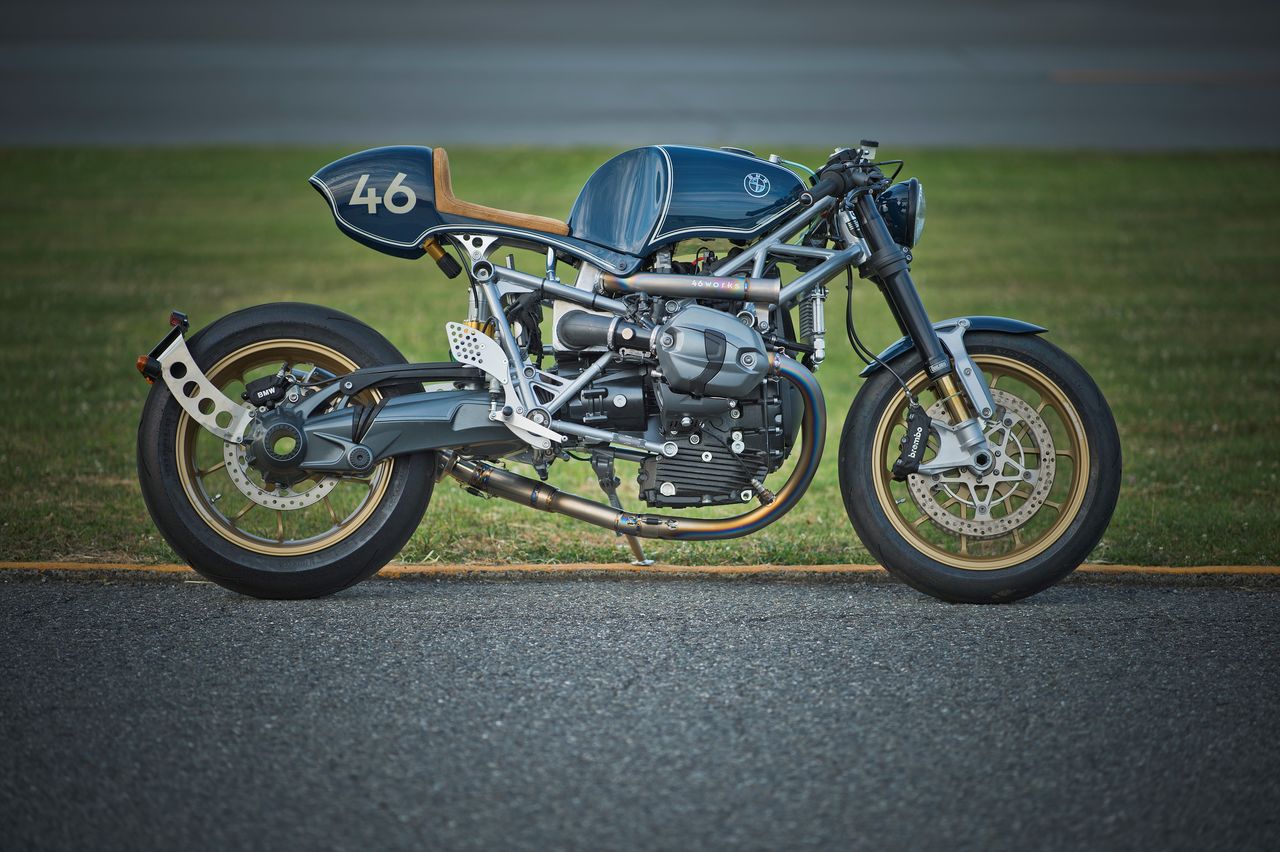
Nakajima’s “Clubman Racer” is beautiful in its simplicity. (© Takayanagi Ken/BMW Motorrad)
Nakajima says that he was initially drawn to BMW and Moto Guzzi models for their performance and distinctive engine designs. “They’re great bikes to work with,” he declares. “All I do is build on the quality that’s already there.” This typically involves souping up the engine, swapping out heavy exterior components with modern materials—“a lightweight bike is easier to ride”—and boosting comfort and safety with a high-performance suspension and upgraded braking system. When building a bike, though, Nakajima insists that it has never been his style to add elements for the sake of “playing to the crowd.” Rather, his focus is solely on “making a custom that fits the demands and desires of the person ordering it,” declaring that a “46works custom is always a one-of-a-kind machine.”
An experienced racer with several titles to his name, Nakajima has honed his technique as much on the speedway as in the workshop. Racing serves as a testing ground for both new ideas and the machines he builds. He asserts that in customizing, there are no correct answers, but a machine’s performance on the track provides a clear indication of its merits. As Nakajima says, winning “is all the proof you need.”
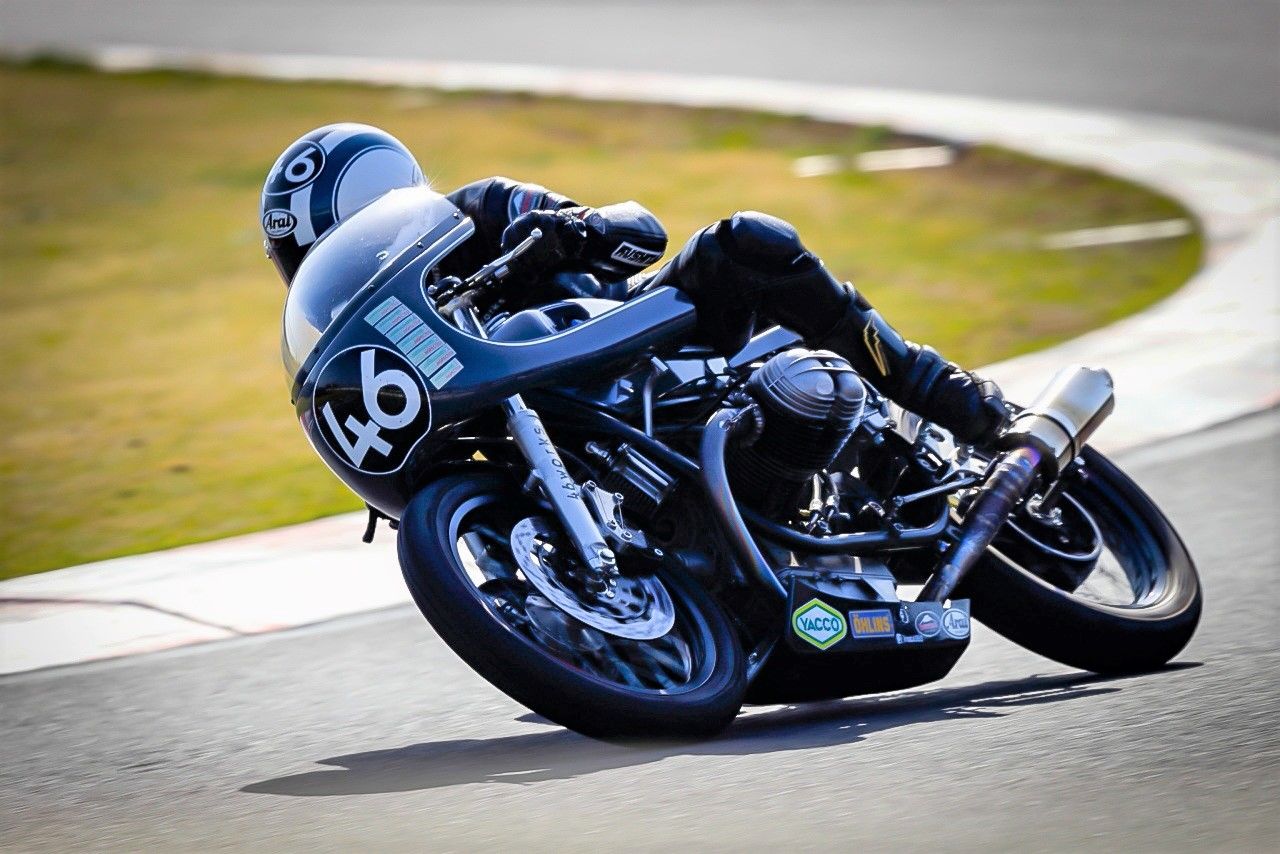
Nakajima rides a custom BMW of his own design in a vintage road race. (© Nakajima Shirō)
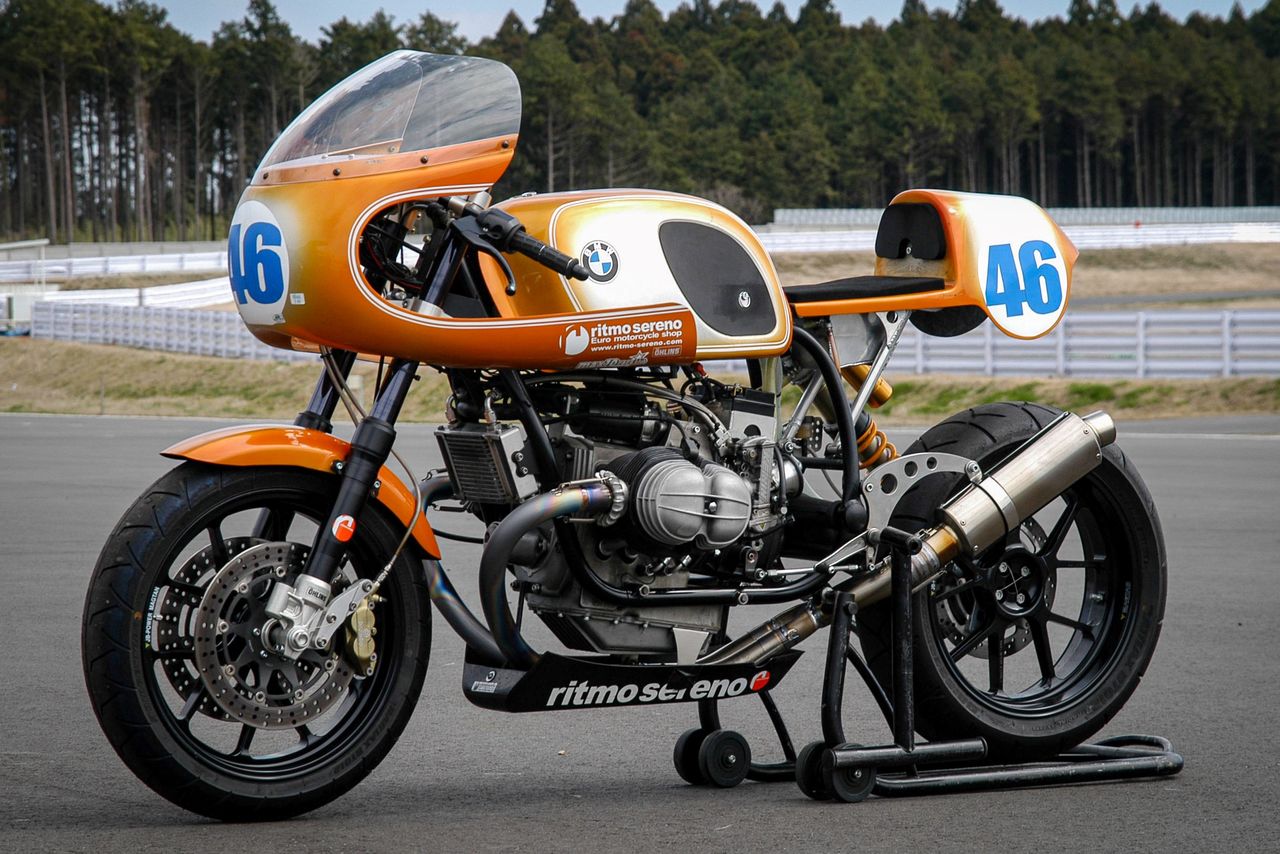
This BMW R80 Racer built by Nakajima in 2006 while at Ritmo-Sereno was a first in featuring modern components and set the customizing world abuzz with its beauty and speed. (© Nakajima Shirō)
Returning to Basics
Nakajima is known for the beauty of his customs, a reputation he welcomes even though he maintains that aesthetics are not one of his top priorities. “I’m not one to rely on inspiration or let my imagination run wild as an artist might,” Nakajima says. “I’m totally lost when given a free hand.” To him, the artistic appeal of the bikes he builds arises from applying the preferences of the person ordering the custom in a way that heightens the inherent qualities of the machine. “It’s about enhancing the different features of a motorcycle and improving performance.”
Describing the process, he says the first step is to work out with the client the overall feel they are aiming for. “This will determine what features and functions to include and the eventual shape the machine will have,” he explains. “From there, I tweak and adjust the various components millimeter by millimeter, a process that both imbues the machine with beauty and maximizes functionality.”
Nakajima has always been one to pursue his passions wholeheartedly. Even as a child, any new pursuit that piqued his interests quickly absorbed him completely. In elementary school, he became an amateur radio operator and spent countless hours entranced by the diverse people he found on the airwaves. In response to his mother trying to teach him to play the piano, he took up the guitar, which in time led him deep into the music scene. It was the same with manga, vintage cars, and ultimately motorcycles.
His first job as an adult was editing a motorcycle magazine. At the same time, he pursued a career in music, playing guitar, writing, and producing other musicians. However, these felt like ways to pass the time rather than true passions. The one exception among his many interests was customizing motorcycles.
Now an established builder, Nakajima refuses to be complacent and continues to forge new ground. His recent solo exhibition represents an attempt to raise custom bikes from niche objects to works of art.
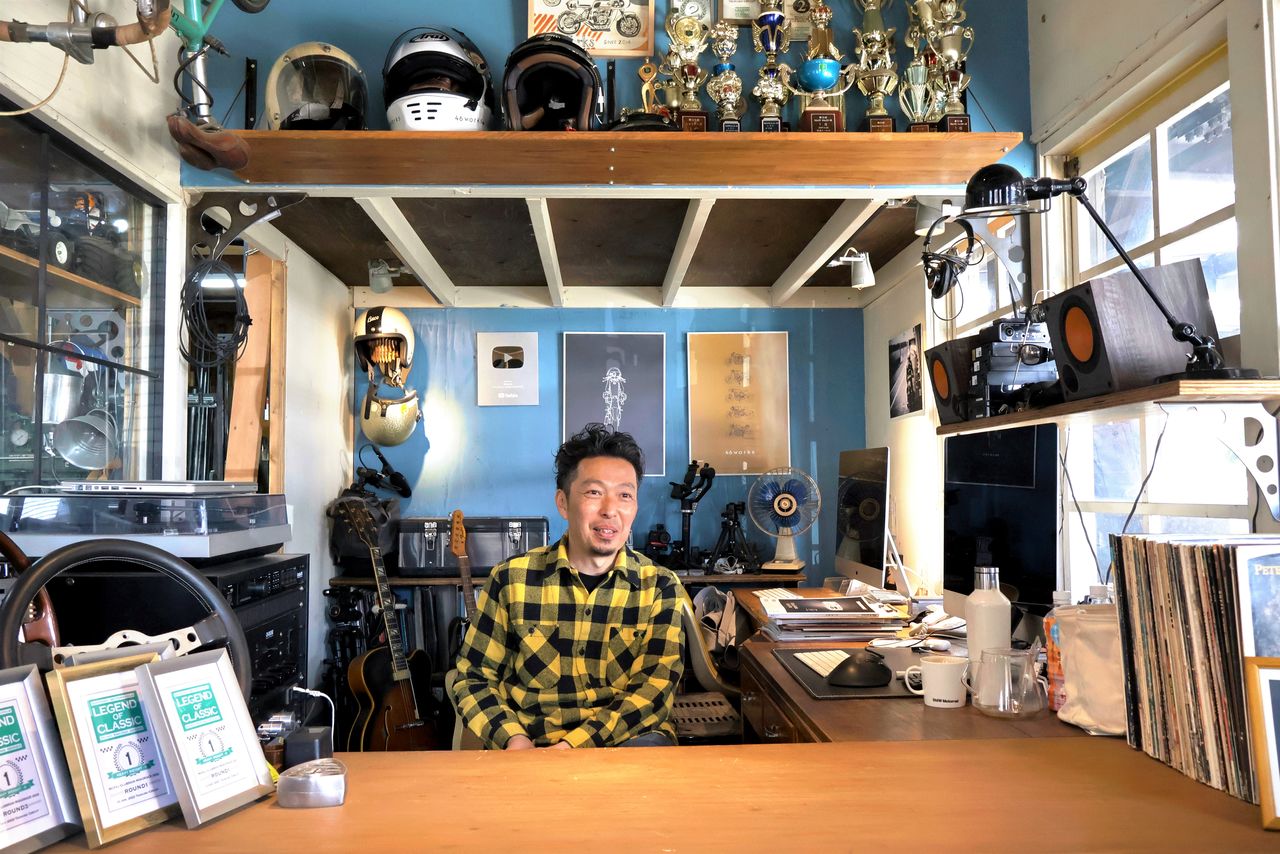
Nakajima, surrounded by the trappings of his many interests, at his office at 46works. (© Fuchi Takayuki)
Nakajima has also set up a YouTube channel where he posts videos introducing his customizing techniques. The goal is to pull the curtain back on 46works to give motorcycle fans an entertaining tour of the manufacturing process. The channel boasts some 170,000 subscribers from around the globe who tune in to admire Nakajima’s unparalleled skills and experience.
Some have expressed surprise at Nakajima’s openness in sharing his talents and know-how online, but the customizer is unconcerned about the threat of copycats stealing his techniques. “Anyone who feels up to it is welcome to imitate what I do,” he declares confidently. “Traditionally, customizing has just been about builders filling orders for clients. My aim is to take the industry beyond this model. Sharing techniques and other information through videos seemed like a good place to start.”
Ambitious and driven when it comes to what he loves, Nakajima firmly believes that there are others out there who share his passions. This conviction gives him the confidence to continue crafting stunning customs and to share his creations and skills with likeminded individuals online the world over.
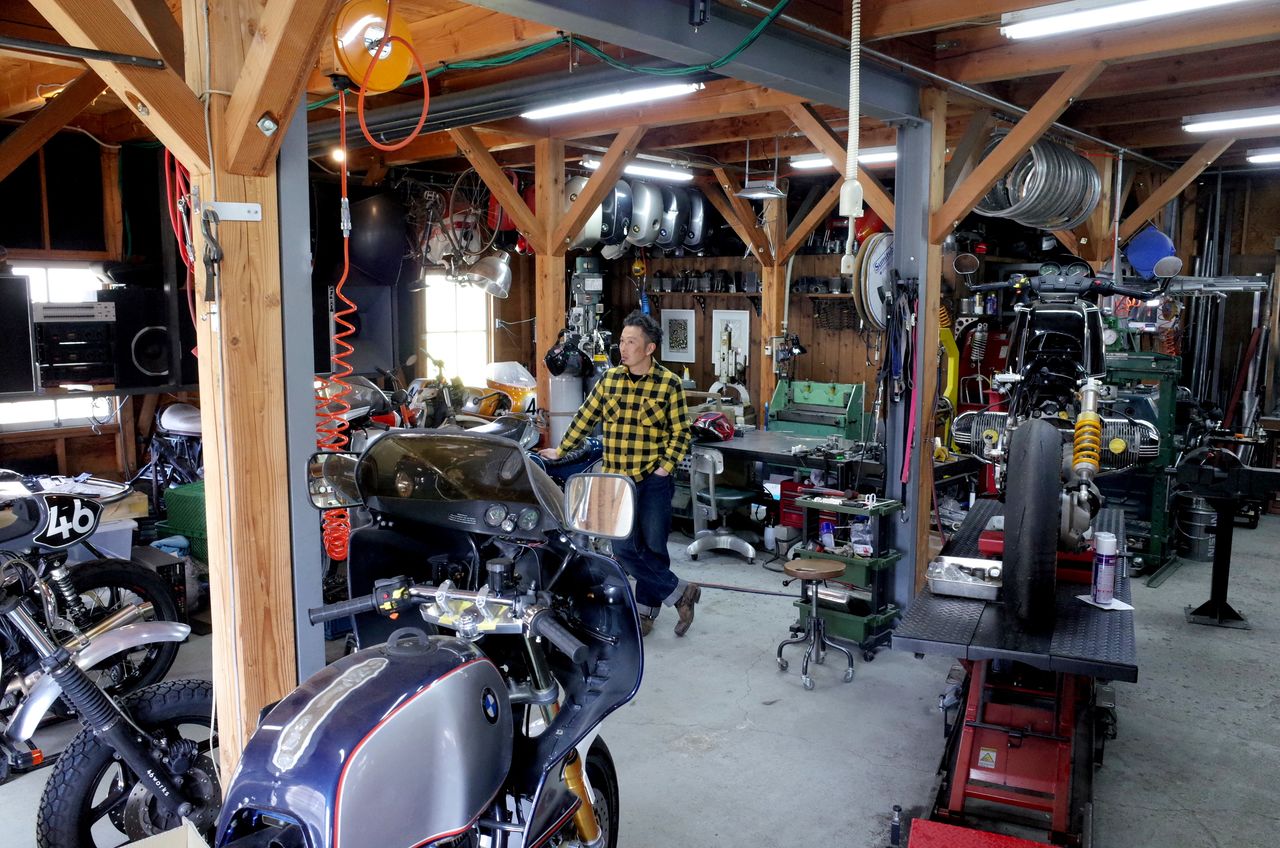
Motorcycles, parts, and machinery fill the main shop of 46works. A different wing is dedicated to four-wheel vehicles. (© Fuchi Takayuki)
(Originally published in Japanese. Banner photo: Custom bike specialist Nakajima Shirō in his workshop. © Nakajima Shirō.)